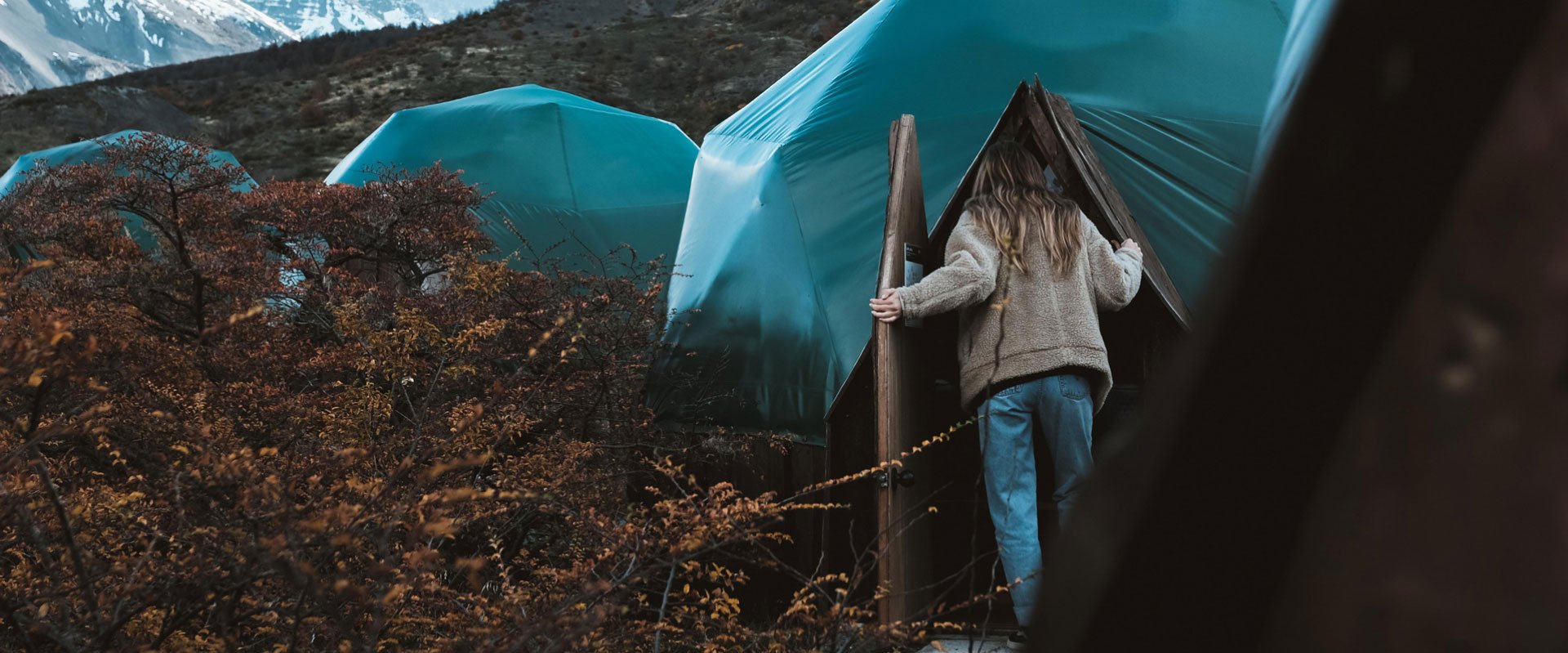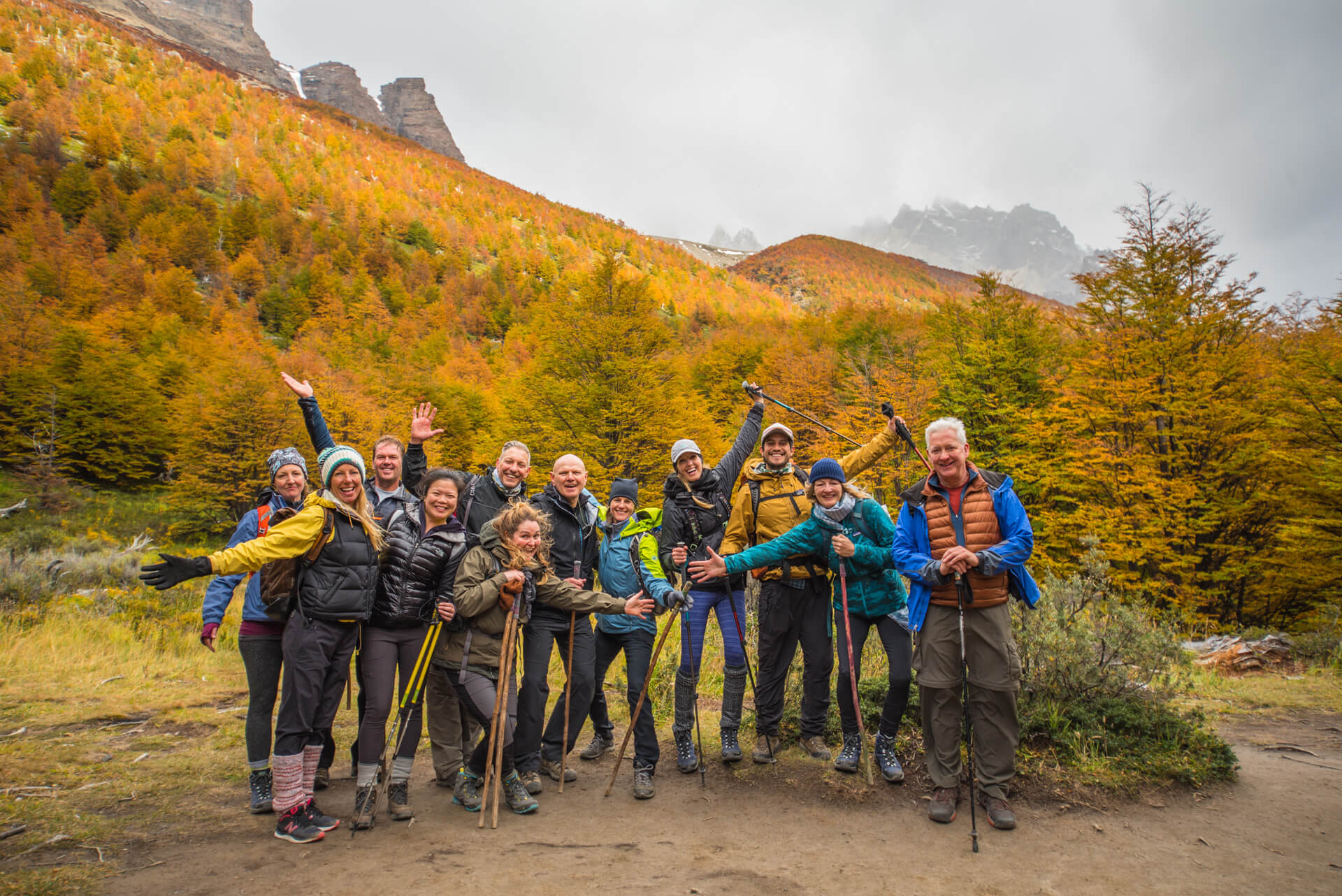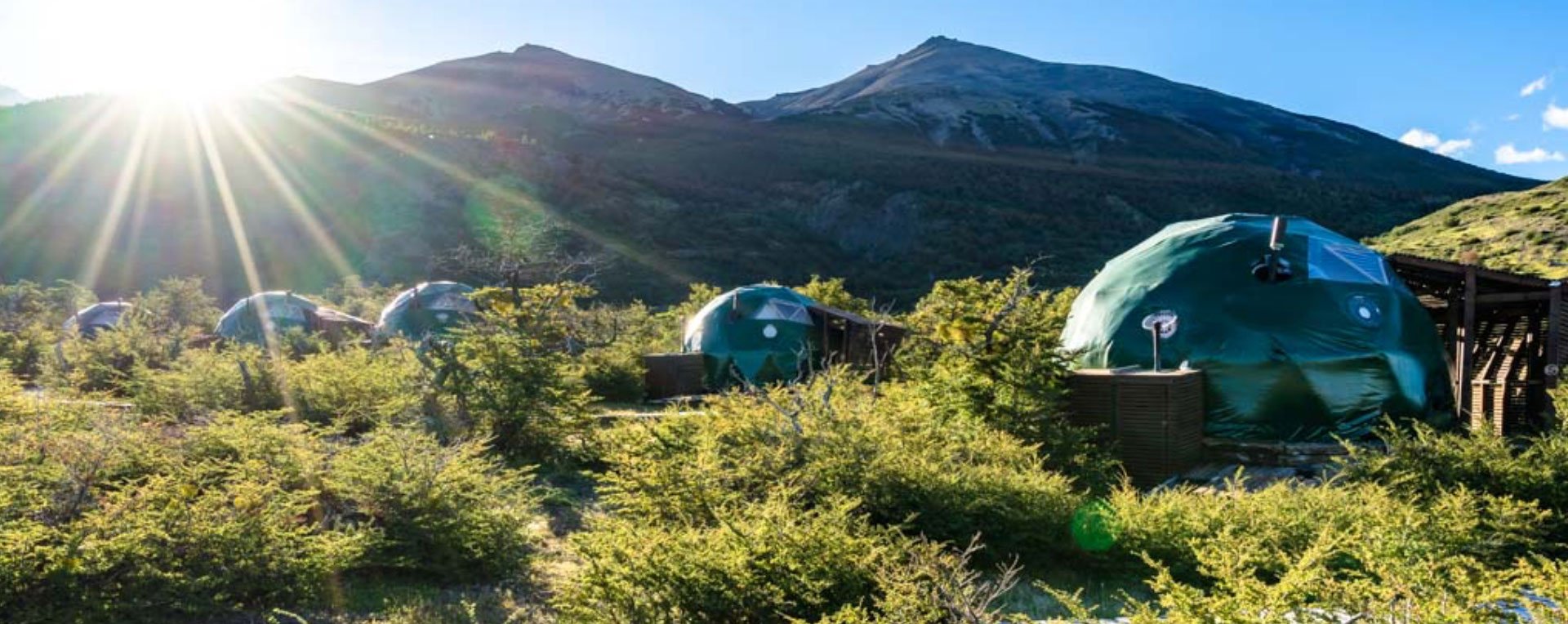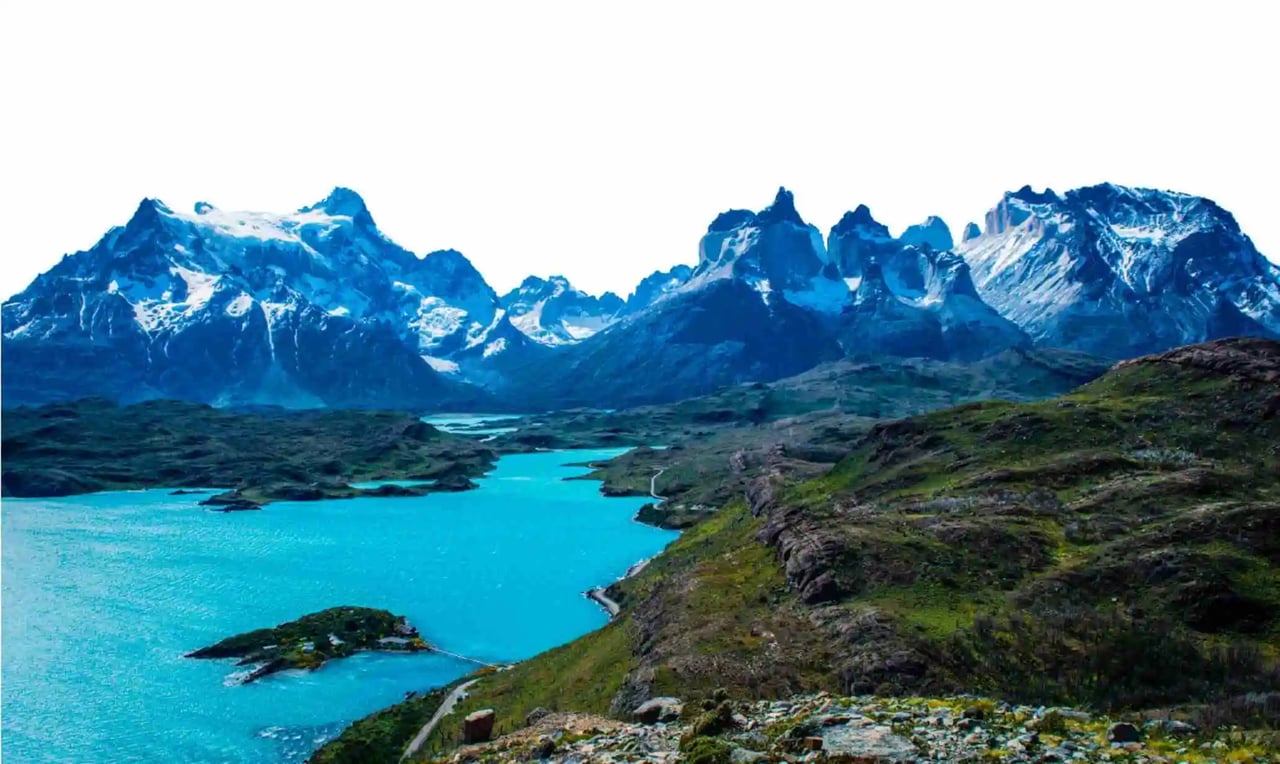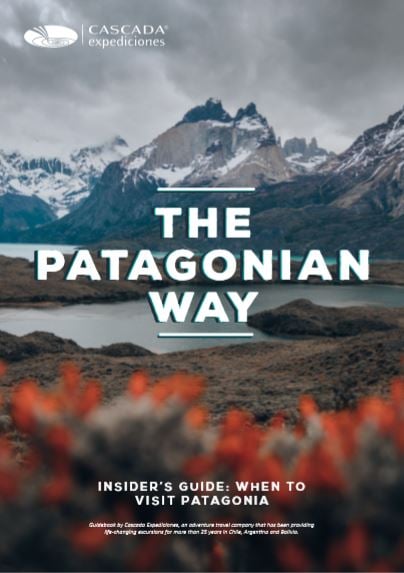What could an experienced EcoCamp guide recommend to a guest visiting Patagonia for the first time, and which excursion is his favorite and why? We asked these questions and others to our experienced Wildlife Safari Senior guide, René, who has worked with us for four seasons.
What made you become a guide?
“I never imagined becoming a guide—it was never in my plans,” René begins. Born and raised in Punta Arenas, he explored Patagonia, hiking, and getting to know all the corners. His father worked in tourism for many years, and René often accompanied him. “That’s where my sense of service comes from,” he says.
Though he started at EcoCamp as a driver, René quickly became curious about guiding. “I watched the guides and thought, ‘I can do that too,’ especially since I already spoke English.” At 38, he made the leap. “It felt like a reinvention—doing something I love, outdoors, and making a living from it.”
He sees guiding as more than leading hikes: "I show people my homeland. I help them connect with the land, its history, and its stories—from the Selk’nam and Aonikenk to the pumas and guanacos. I love inviting people to imagine what life was like here before waterproof jackets and welcome centers.”
Over time, René developed his own style. “I don’t like textbook answers. I prefer to spark curiosity about life systems like cyanobacteria or lichens, the wind, the silence, the spirit of Patagonia.”
Today, every excursion is a chance to learn and share something new. “I live here. This is my place. And I’ll keep doing it as long as I love it—because for me, Patagonia is joy, wind, and wonder.”

What advice would you give to someone visiting Patagonia for the first time?
Before coming here, I think it’s important to really understand the concept of the place you're visiting—especially a place like EcoCamp, where it’s not just about landscapes or domes, but about the experience as a whole.
A lot of people arrive thinking it's just about seeing the Towers or staying in a cool dome. But EcoCamp is a community. You share meals, excursions, and conversations with the guides and other travelers. You're not just passing through the land—you’re part of something, even for a few days. And not everyone is ready for that. I've noticed it especially with people who arrive early in the season—sometimes they're surprised to dine at a shared table or have breakfast with their guide.
So my main piece of advice is to come informed and really understand what you're stepping into. There’s no cell phone service here. The days are long and active. Life here follows a rhythm: you hike, you eat, you sleep. That’s the cycle. Some guests arrive expecting something more relaxed or solitary, and then suddenly, they’re hiking 18 kilometers and having dinner with strangers. It can be intense at first.
But that’s also the beauty of it. You hike, you push yourself, and your body releases all those endorphins. Then you’re back, glass in hand, with a warm meal in front of you, wind howling outside while cozy in your dome among the trees. That combination—it moves people. I’ve seen it again and again.
So yes, most people end up loving it, even if they were surprised at first. But a little mental preparation goes a long way. Be ready to connect with others. Walk a little before you come. Eat well. Take care of your body. Because here, you’ll need it.
And if you do that—if you come with an open mind, and just let yourself be part of it all—then this place will give you something truly special in return.

What is your most memorable moment while guiding for EcoCamp?
“One of my most memorable moments was totally unexpected—and a bit tragicomic, honestly. It happened during an epic kayaking excursion. We were paddling back from the lake when a sudden gust of wind hit us hard. The guest panicked, and we capsized.
Looking back, it wasn’t truly dangerous—we were well-equipped, and it was just a matter of getting to shore. But falling into that icy water, feeling the wind and cold, while also trying to support a nervous guest… It was surreal. I never imagined that would happen to me.
In the end, we made it back quickly, just two intense minutes of wind. We regrouped on the shore, and the guest actually loved it. He said, ‘René, I never thought I’d fall into a frozen Patagonian lake, but thank you-you stayed calm and I never felt scared. Cold, yes, but never afraid.’ Much credit goes to José from the kayak team, who guided us through everything.
That was the first memory that came to mind. But there’s another one—from my days as a driver. I’ll never forget my first puma sighting. I was alone in the van when I spotted one walking beside the road. It actually used the van as cover to sneak up on guanacos. I slowed down, and it stayed right beside me for a while. At one point, it even looked at me, as if to say, ‘Thanks—we’re good.’ That moment stayed with me.
So yes, one memory was an unexpected dip in a freezing lake, the other a quiet moment with a puma—but both were unforgettable in their own way.”
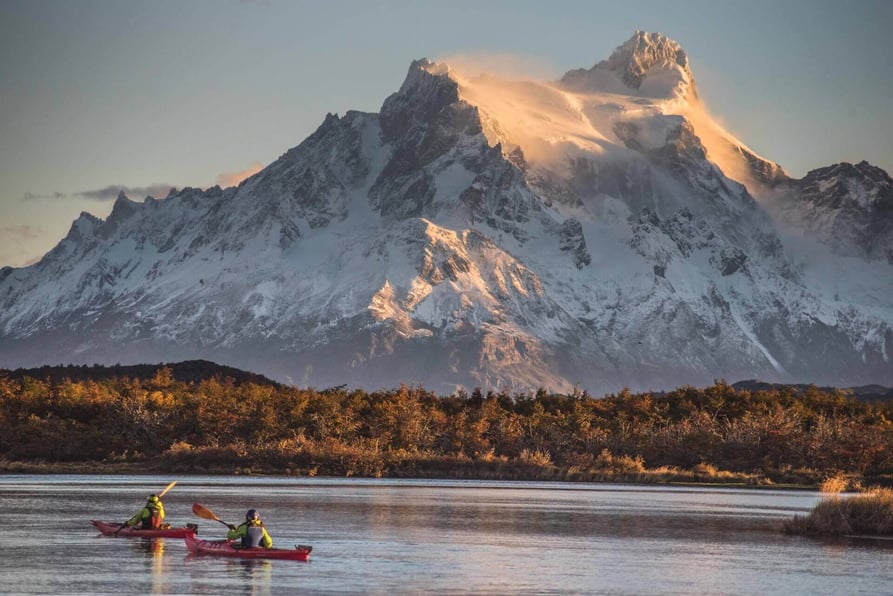
What are the common mistakes travelers make when hiking in Patagonia
“One of the biggest mistakes I see is people not speaking up, trying to keep pace with the group even when they’re struggling. Instead of enjoying the hike, they suffer through it out of pride, to keep up.
Another common issue? Wearing too many clothes. But more than that, people often underestimate the challenge of these hikes. They don’t always realize what it really means to hike to places like Base Torres or the French Valley, especially if they’re afraid of heights or aren’t used to long distances.
And sometimes, they don’t pay close attention during the briefings—maybe because they feel too relaxed with a pisco sour in hand. But those briefings are essential. So yes, not knowing your limits and trying to fit in at the cost of your own well-being—that’s a mistake I see all the time.”
Unsure what to bring? See our packing list of what to bring to Patagonia

Your favorite Wildlife Safari excursion and why
“My all-time favorite is the Ferrier hike. You gain elevation, get panoramic views of glaciers and the lakes—Sarmiento, Nordenskjöld, Pehoé—with all their different colors. It’s a perfect spot to explain geology, glacial retreat, and the origins of the massif. And the wind—real Magellanic wind—I love showing people that Patagonia is wind for me.
Even if Ferrier isn’t picked often, I always recommend it. I might not guide it myself, but I still promote it.
From the more popular excursions, I’ve been really enjoying French Valley this year. It’s dynamic, and a great place to talk about geology in an accessible way. It's stunning between the glacier, the French River, Lake Skottsberg, and the Pehoé boat views. And if people walk away knowing what kinds of rocks they saw, I’m happy.”
See all the options we have in our Wildlife Safari program here

What's your favorite activity from the Epic Multisport program?
"With the Epic, well, definitely the kayak—even if I don’t always enjoy it as much myself, I see that guests really love it. The kayak is basically the star of the Epic program. For us as guides, it's great when we get to kayak properly. But for guests, it’s the most adrenaline-filled experience because it’s a very Patagonian kind of kayaking. Kayaking with the wind is not the same as kayaking on a calm lake in the sun".
Read about the other activities of our Epic Patagonia program here

What’s something you always carry in your backpack on long or multi-day hikes?
"Coffee. Always! And usually a few extra snacks—people are always hungry. I have a personal policy: guests should eat something every three hours. Bread, water—staying nourished and hydrated is key. I also carry a sleeping pad, not just for safety, but so people can sit anywhere comfortably. Lately, sunscreen too—I got badly sunburned last year. And of course, my radio and first aid kit—that’s just part of being a guide".
What would you recommend as an alternative to the Base Torres Trek?
We know the Base of the Towers trek can be too much for many people, especially if you have knee or hip issues. What would be a good alternative for someone who wants to see the towers but does not want to do that demanding hike?
"I really love the activity Water & Granite: Lookouts of Paine, with the Los Cuernos and Cóndor lookouts. Those are beautiful. The only limiting factor is sometimes the weather. However, nothing will ever fully replace Base Torres or French Valley. With those, you’re in the mountains. You’re seeing them from inside".
Thank you, René—we appreciate you sharing your story and personal insights.

Would you be interested in experiencing EcoCamp and Torres del Paine with us? Send us an e-mail, and we will help plan your next adventure! Reservations@cascada.travel

